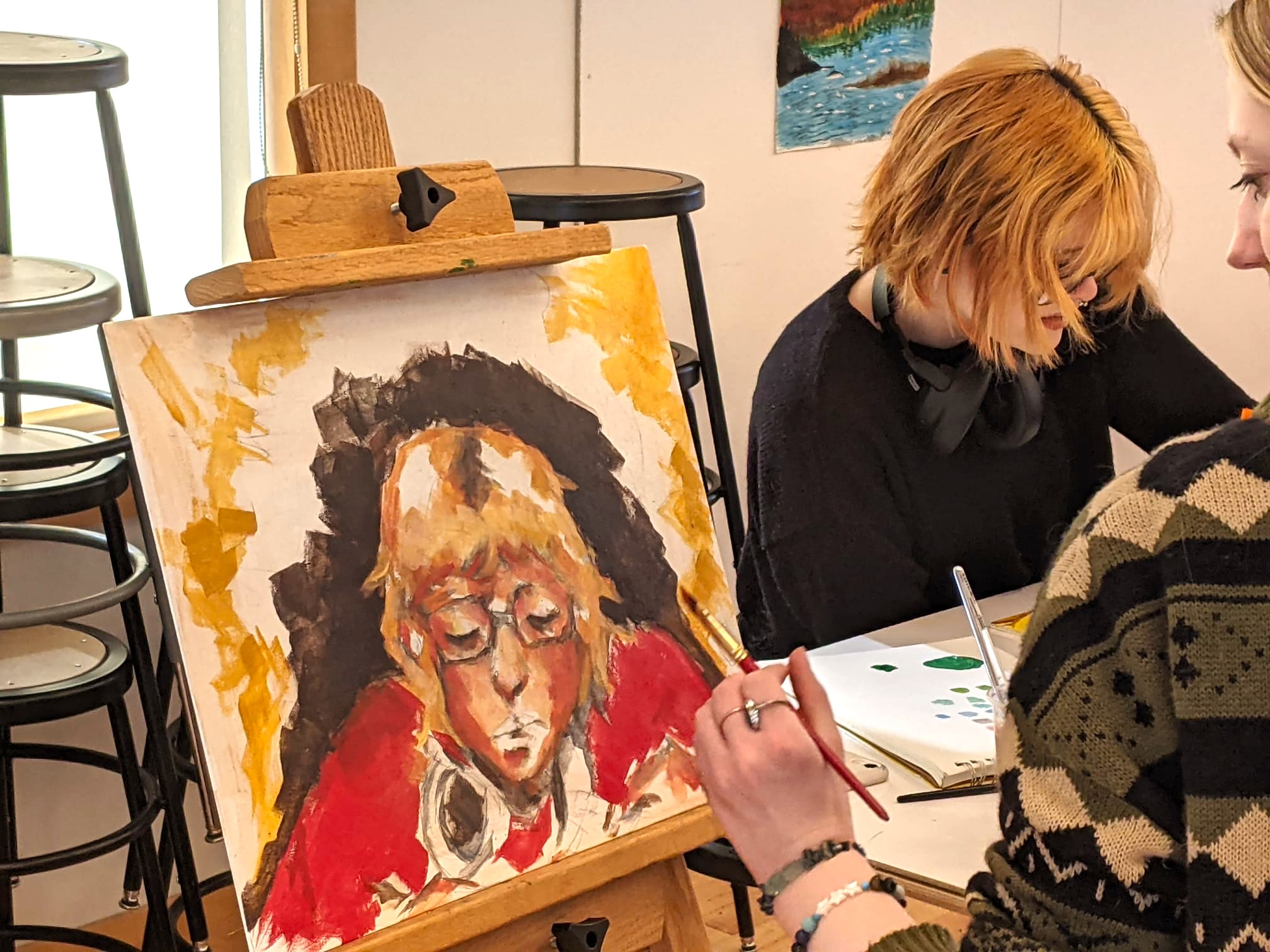 We’re getting down to crunch time in the Monson Arts High School Program. Students are honing in on their final projects, getting feedback, crossing out lines, rewriting, erasing, painting over, and starting fresh with more tools in their creative arsenal. Teachers Dawn and Alan along with Monson Arts staff helpers Mike and James, are supporting students to bring all they’ve learned since September to the foreground, teaching them to trust the layers of ability they’ve built while encouraging their natural creative instincts to flourish.
We’re getting down to crunch time in the Monson Arts High School Program. Students are honing in on their final projects, getting feedback, crossing out lines, rewriting, erasing, painting over, and starting fresh with more tools in their creative arsenal. Teachers Dawn and Alan along with Monson Arts staff helpers Mike and James, are supporting students to bring all they’ve learned since September to the foreground, teaching them to trust the layers of ability they’ve built while encouraging their natural creative instincts to flourish.
Visual Arts
A short update on the visual artists: Alan Bray has been focusing the students on going over some of their completed work that perhaps has not quite been fully realized. By refocusing students on “finished” paintings, sculptures, and drawings Alan got them to not only scrutinize what they’ve produced but discover the intricate process of what completed work actually can look like before putting the brushes away.
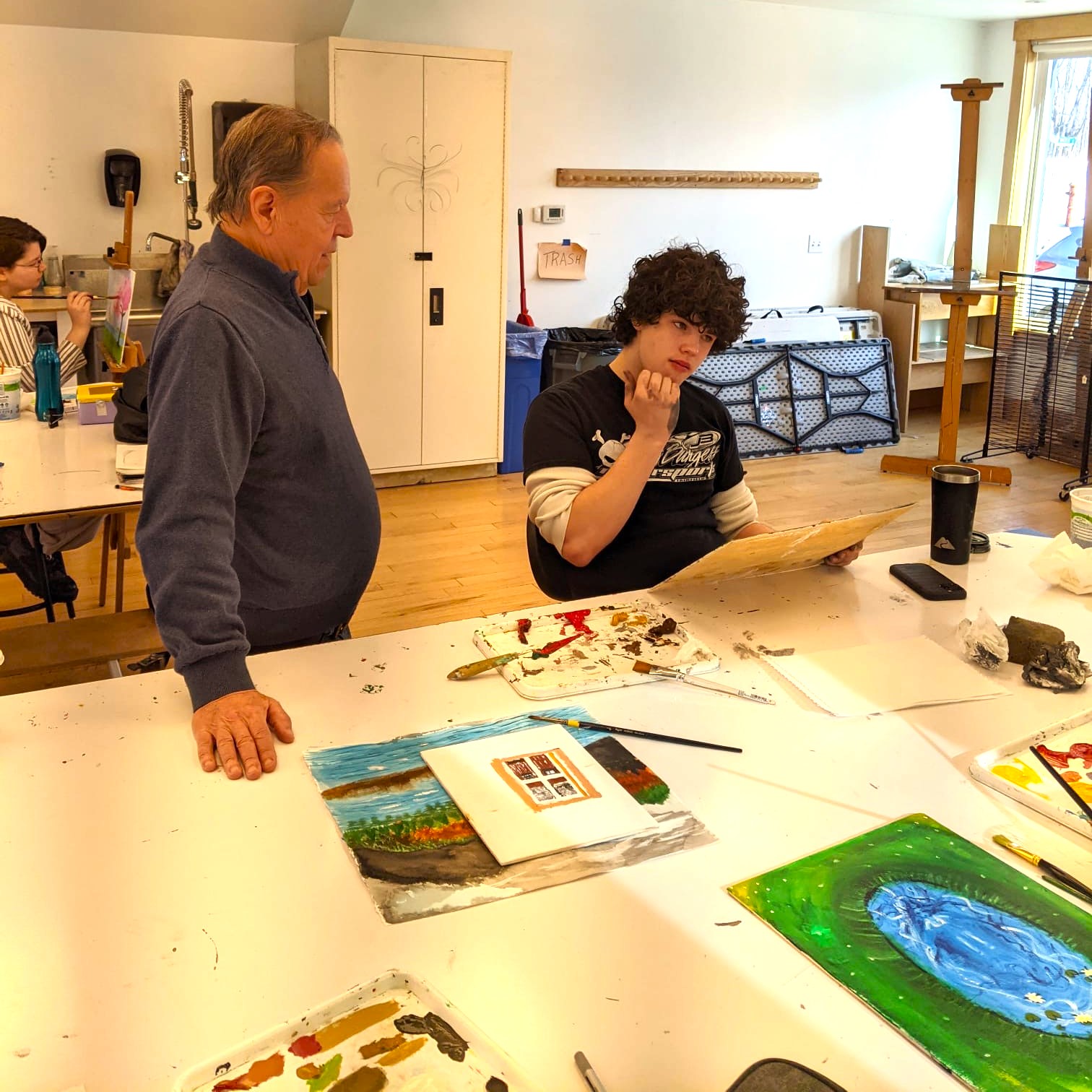
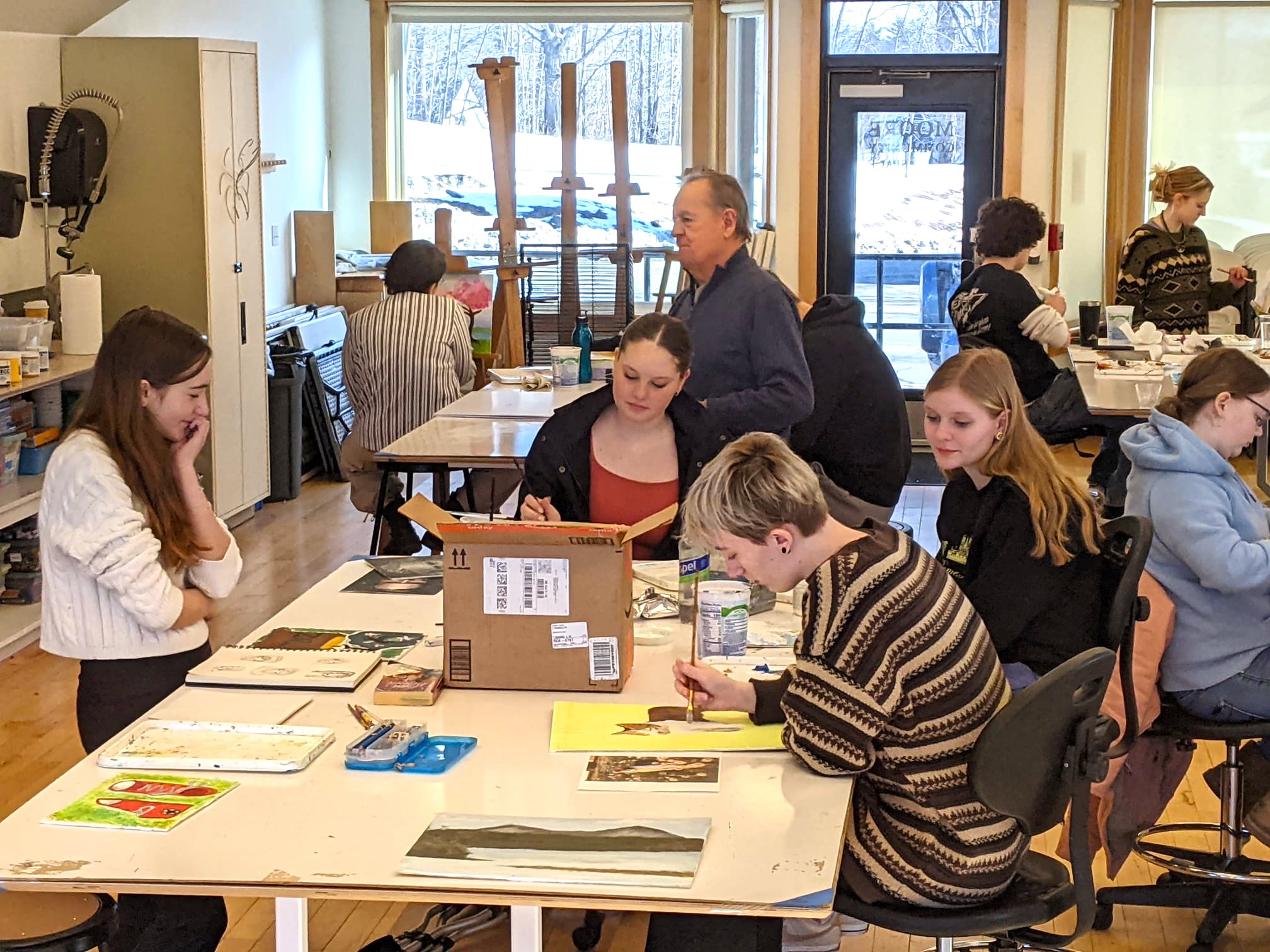 This component of being a maker of art is an elevated step in the growth of each artist and creates a conversation within the student about how they determine and make creative choices. Alan’s goal is to bring some of that work to completion as students ready themselves for the student gallery show opening on May 3rd. In Alan’s words “Along with new work that we are making, we are very aware that the year is coming to fruition and the time is approaching for a final push.” We can’t wait to see those final results!
This component of being a maker of art is an elevated step in the growth of each artist and creates a conversation within the student about how they determine and make creative choices. Alan’s goal is to bring some of that work to completion as students ready themselves for the student gallery show opening on May 3rd. In Alan’s words “Along with new work that we are making, we are very aware that the year is coming to fruition and the time is approaching for a final push.” We can’t wait to see those final results!
Writers
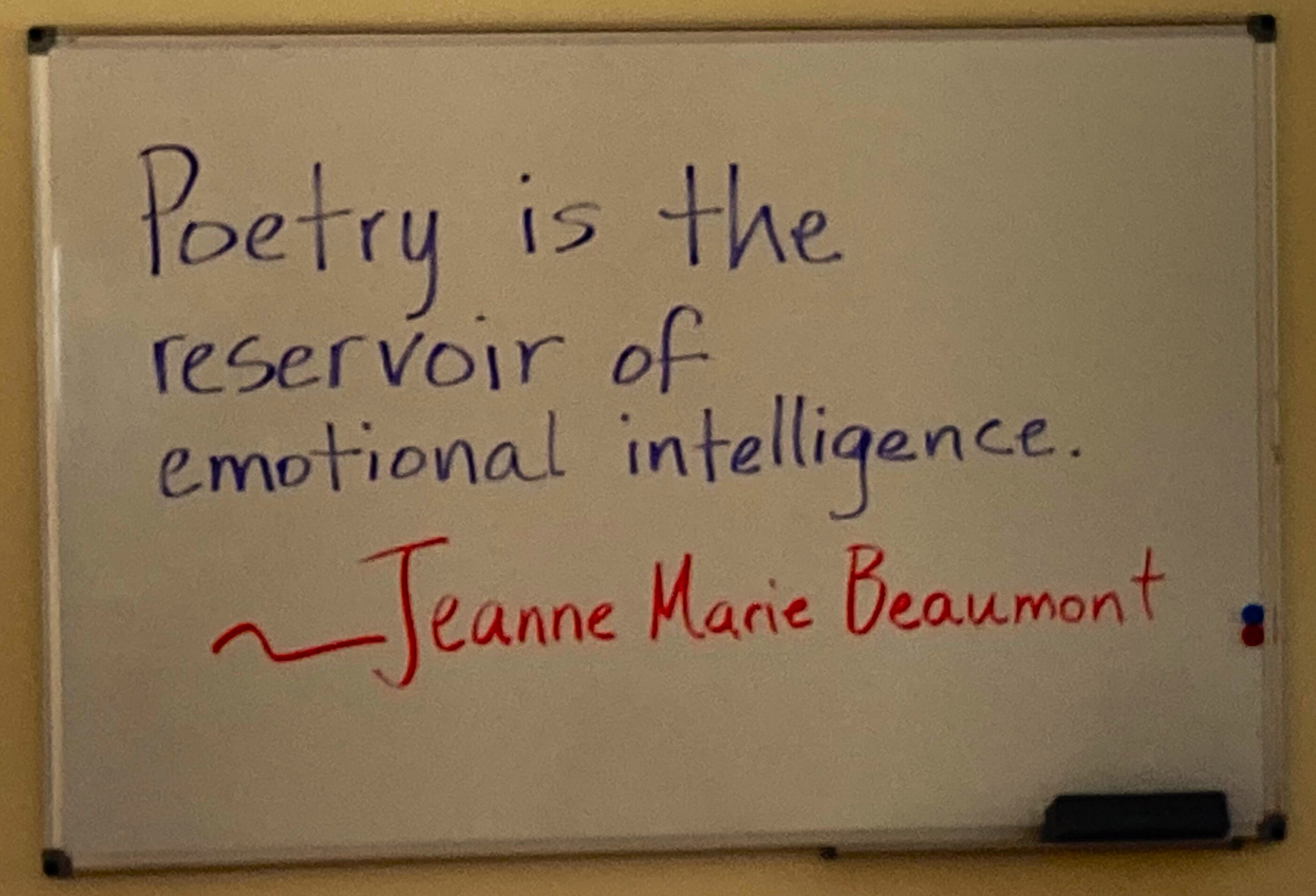 Writing students are both generating new work but with a twist similar to the visual artists: they’re using old work.
Writing students are both generating new work but with a twist similar to the visual artists: they’re using old work.
To get started in the first class in this set, students began with two exercises. First, standing in a circle students tossed a bean bag to each other to take turns spontaneously developing a story, line after line. After this warm-up students read a poem by Jeanne Marie Beaumont after which teacher Dawn led a discussion of its themes and techniques before using lines from the poem to have students create a brand new work. For the next hour students continued to play with their newly generated poem mixing it with the original source poem followed up with discussions.
 But the heart of the day was Dawn having students looking at their well-worn writing journals and pulling out a piece they “didn’t like” and having them write out the strengths and weaknesses of the piece then sharing those results with the class. Dawn then had them spend 15 mins completely re-writing the piece which led to a longer, peer led discussion on the changes students made, how they built off the original, revisiting their original idea but with perspective and with the intention of making the weakness the strength.
But the heart of the day was Dawn having students looking at their well-worn writing journals and pulling out a piece they “didn’t like” and having them write out the strengths and weaknesses of the piece then sharing those results with the class. Dawn then had them spend 15 mins completely re-writing the piece which led to a longer, peer led discussion on the changes students made, how they built off the original, revisiting their original idea but with perspective and with the intention of making the weakness the strength.
After lunch, a group of four, current Monson Arts Resident writers sat down with the students to talk about what they do as professionals and how they make their work happen.
 Class two of this section followed a similar path as the first: reading a poem then doing a related class exercise followed by the students reworking an old piece of writing. In this case it was a work called Why Bother by Sean Thomas Dougherty which was used in tandem with a poetic form called “Golden Shovel”: students took a line from the poem and used each word in that line as the last line in a new poem. Again, this reimagining of a piece, playing with spontaneous themes, being challenged in a compressed amount of time to generate an original work is a form of creative problem solving which is at the heart of the program.
Class two of this section followed a similar path as the first: reading a poem then doing a related class exercise followed by the students reworking an old piece of writing. In this case it was a work called Why Bother by Sean Thomas Dougherty which was used in tandem with a poetic form called “Golden Shovel”: students took a line from the poem and used each word in that line as the last line in a new poem. Again, this reimagining of a piece, playing with spontaneous themes, being challenged in a compressed amount of time to generate an original work is a form of creative problem solving which is at the heart of the program.
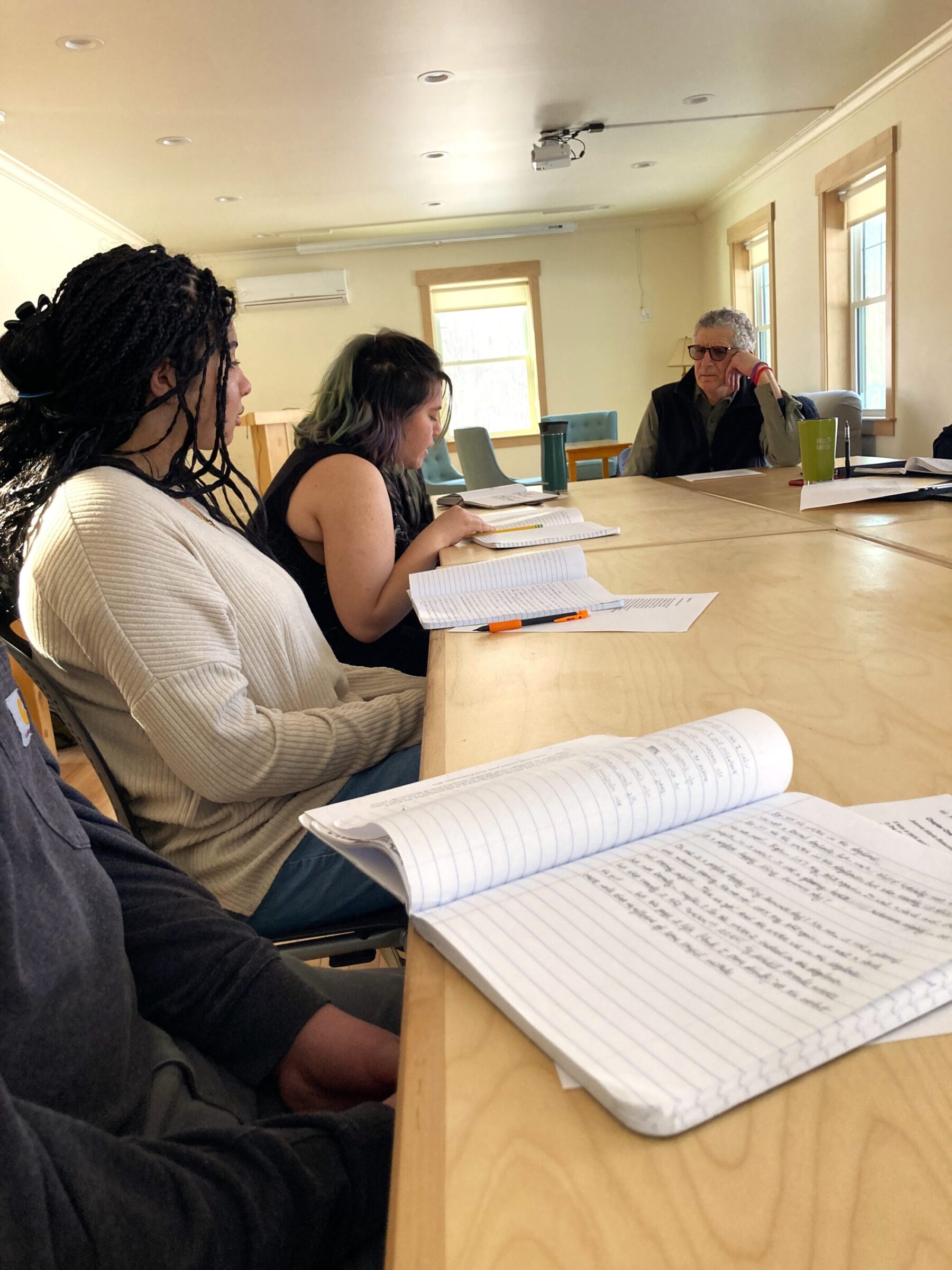 Before the next exercise, the writing group was joined by Monson Arts Senior Advisor and former Maine poet laureate, Stuart Kestenbaum who sat in and listened, giving feedback directly to student readings which consisted of rewritten exercises from previously written journal pieces. Again, Dawn led students in diving into a previous draft, pulling its good and bad parts apart before having them write improvements.
Before the next exercise, the writing group was joined by Monson Arts Senior Advisor and former Maine poet laureate, Stuart Kestenbaum who sat in and listened, giving feedback directly to student readings which consisted of rewritten exercises from previously written journal pieces. Again, Dawn led students in diving into a previous draft, pulling its good and bad parts apart before having them write improvements.
The last part of class was a discussion on the gallery show with Dawn asking for four works to be worked on for the gallery show with two being the final ones. Then a discussion on what’s next as far as copy editing, formatting, titling, font choice, and how it will be laid out in the gallery walls.
Lots of writing, reading, editing, rewriting, discussion, feedback, conversation, and peer and mentor interaction was had by all!

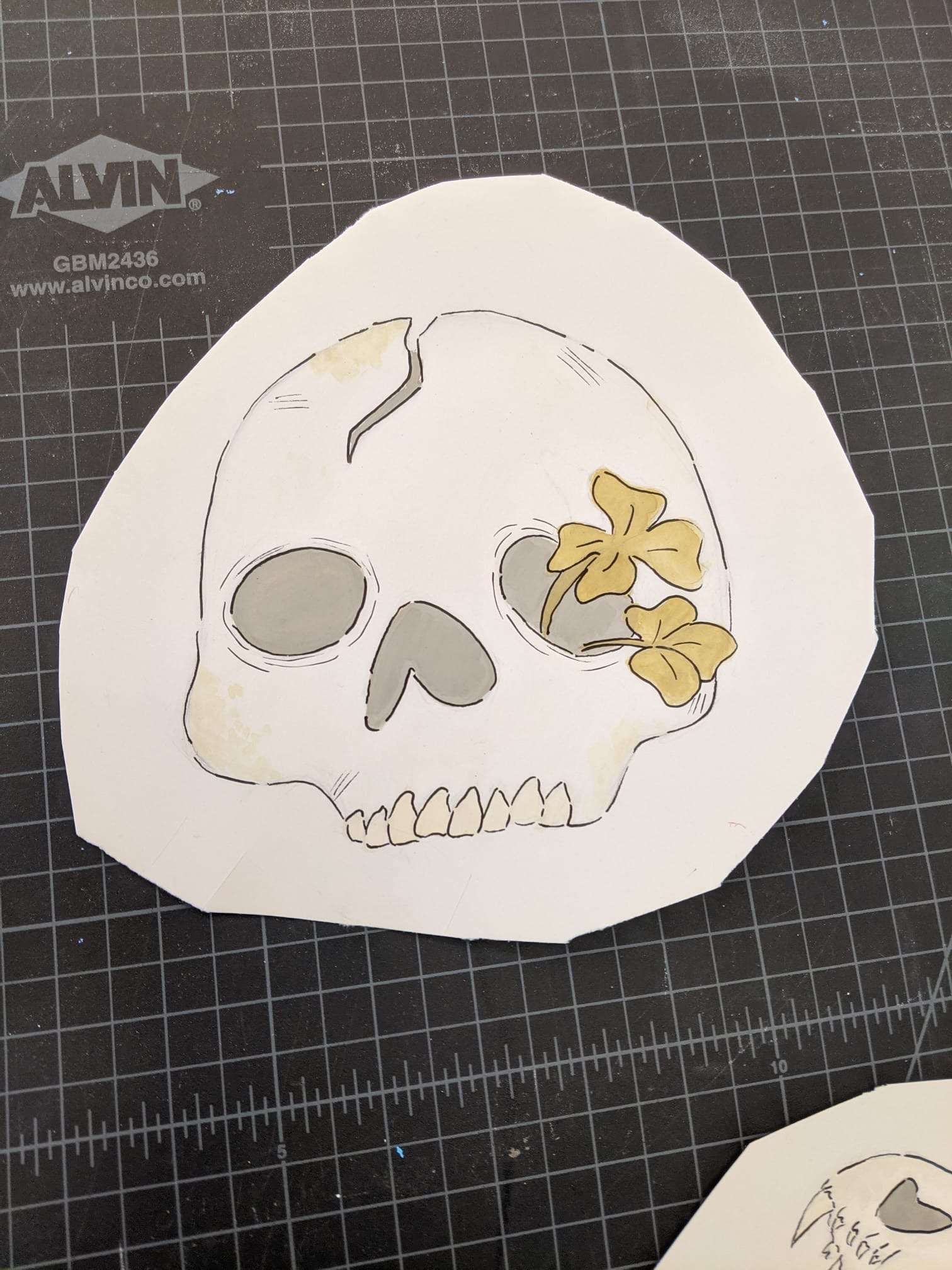
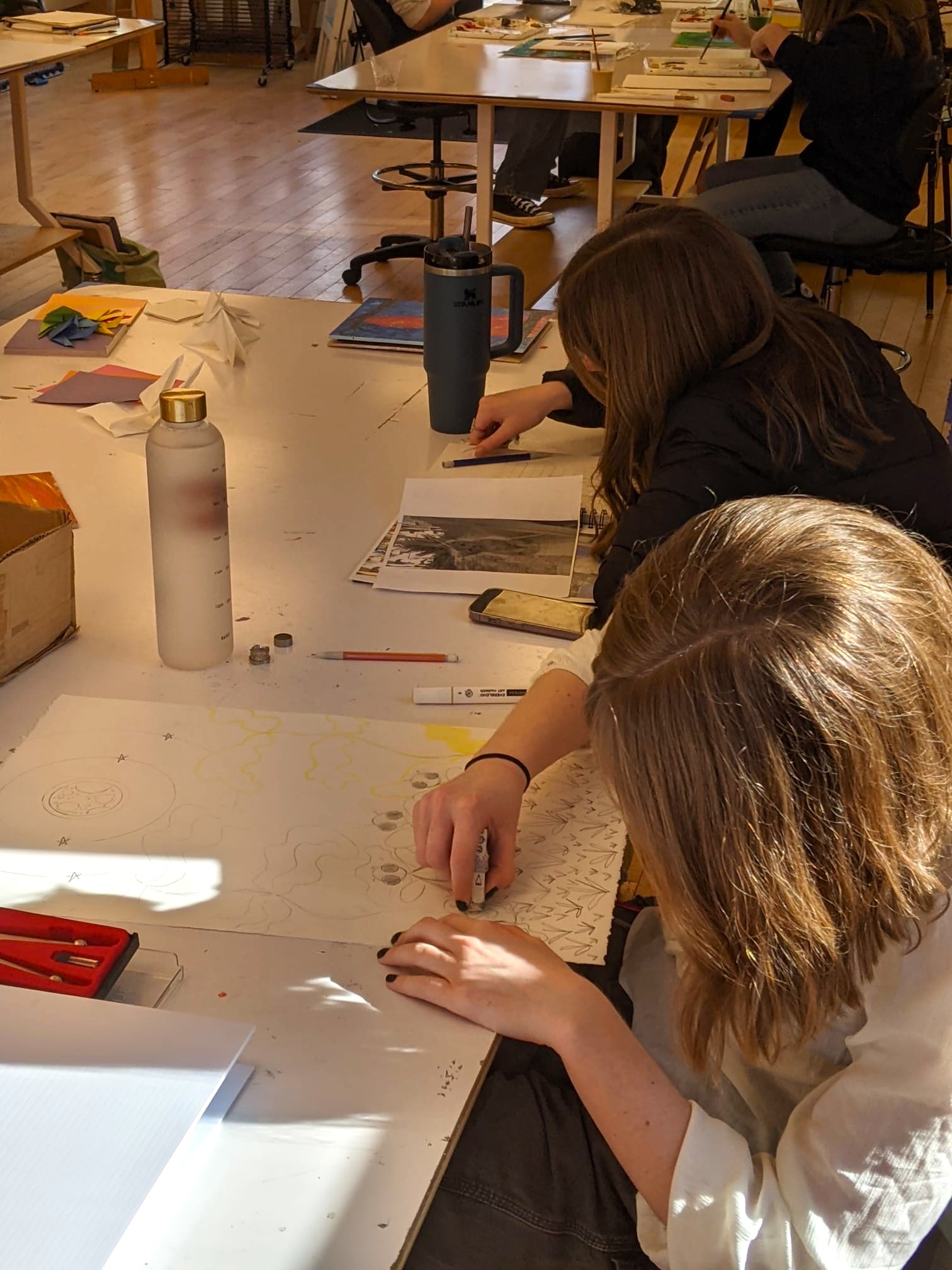
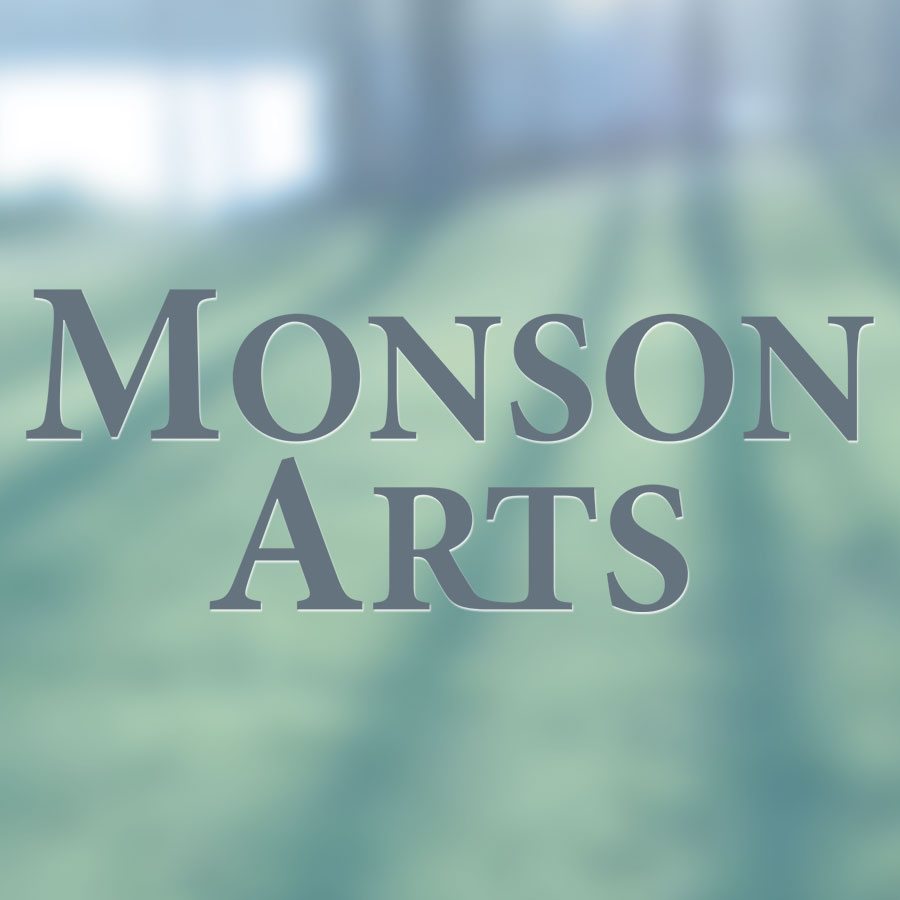 Time and space to create.
Monson Arts is a new artists’ residency and arts center in Monson, Maine. Programs include residencies for artists and writers, intensive shorter workshops, and educational partnerships with area secondary schools.
Time and space to create.
Monson Arts is a new artists’ residency and arts center in Monson, Maine. Programs include residencies for artists and writers, intensive shorter workshops, and educational partnerships with area secondary schools.